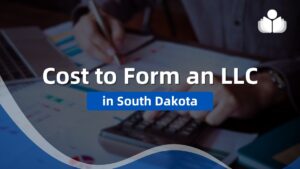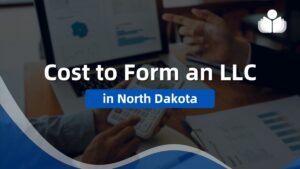Free Nonprofit Micro-eMBA Module 6: Developing Your Strategic Plan
© Copyright Carter McNamara, MBA, PhD, Authenticity Consulting, LLC.
Much of this program is based on materials adapted from the
Nonprofit Capacity Building Toolkit(SM).
This module is in the nonprofit organization development program. However, this module can also be used by anyone as a self-study exercise to learn more about strategic planning and writing a strategic plan.
Sections of This Module Include the Following
- Introduction
- Outcomes
- Materials for Review
- Suggested Topics for Reflection and Discussion
- Activities to Build Systems and Practices
- Assessments
- Tracking Open Action Items
INTRODUCTION
Very simply put, strategic planning identifies where the organization wants to be at some point in the future and how it is going to get there. The “strategic” part of this planning process is the continual attention to current changes in the organization and its external environment, and how this affects the future of the organization. Skills in strategic planning are critical to the long-term success of your organization. This form of planning includes:
a) Taking a wide look around at what’s going on outside the organization and how it might affect the organization (an environmental scan), and identifying opportunities and threats
b) Taking a hard look at what’s going on inside the organization, including its strengths and weaknesses (perhaps doing a SWOT analysis)
c) Establishing statements of mission, vision, and values (some prefer to do that as the first step in planning)
d) Establishing goals to accomplish over the next (usually) three years or so, as a result of what’s going on inside and outside the organization
e) Identifying how those goals will be reached (strategies, objectives, responsibilities, and timelines)
Strategic planning determines the overall direction and goals of the organization. Consequently, strategic planning influences numerous aspects of the organization, including what:
a) Products and services will be provided by the business and how those products and services will be designed
b) Organizational design and roles will be needed by the organization
c) Performance goals should be established for positions throughout the business
d) Board committees should be developed (in the case of corporations)
e) Resources will be needed to achieve those goals, and consequently, how much money is needed to procure those resources — ultimately, the goals determine the content of various budgets
Two key points to remember while proceeding through this module are:
1) The planning process is at least as important as the planning document itself
2) The planning process is never “done” — the planning process is a continuous cycle that’s part of the management process itself
NOTE ABOUT BOARD COMMITTEES: Consider establishing a Board Planning Committee (in the case of corporations) to review and help guide the implementation of the information in this learning module.
The Planning Committee might be comprised of chairs from other board committees. Major activities and goals from this learning module could be incorporated into that Committee’s Committee Work Plan. This module includes additional recommendations for membership in the group of planners.
NOTE ABOUT OCCASIONAL REFERENCES TO NONPROFIT MATERIALS: Various links below refer to nonprofit strategic planning — there is little difference between strategic planning in for-profit and nonprofit organizations. Consequently, all of the materials referenced below can be useful for understanding strategic planning in for-profit organizations.
NOTE ABOUT STRATEGIC PLANNING PROCESS USED IN THIS MODULE:
There are many different ways to do strategic planning. The process used depends on the nature and needs of the organization, the reason for the planning (there are numerous, different reasons for doing strategic planning), the types of priorities faced by the organization, the rate of change outside and inside the organization, the ways that decisions are made in the organization, the expertise of people doing the planning, the extent of external research needed to do the planning, and the personal preferences of the organization’s leaders and the facilitator(s) of the planning process. Because this module aims to explain strategic planning to people who have no — or very little — experience in strategic planning, some basic approaches are described in this module. Other approaches are described in the Library’s Strategic Planning topic.
Also, consider
OUTCOMES
- Understand the Strategic Planning Process
- Draft Your Mission, Vision, and Values Statements
- Conduct Basic Strategic Analysis
- Set Strategic Direction
- Conduct Action Planning
- Draft an Operating Budget
- Write and Communicate Your Plan
- Monitor and Evaluate Your Strategic Plan
- Evaluate Your Strategic Planning Practices
MATERIALS FOR REVIEW
- The following materials will help you address each of the topics and learning activities in this module.
- NOTE: Each of the following links is to a one- to two-page overview. Read all of the following documents referenced by the following links.
Introduction to Basics of Planning (general to most planning processes)
Read all of the documents referenced by the following topic.
Basic Guidelines for Successful Planning Process
Introduction to Strategic Planning
Read all of the documents referenced in the following topics.
- Basic Description of Strategic Planning
- Benefits of Strategic Planning
- When Should Strategic Planning Be Done?
- Basic Overview of Various Strategic Planning Models
Preparation for Strategic Planning
Read all of the documents referenced in the following topics.
- Need a Consultant or Facilitator to Help You With Planning?
- Who Should Be Involved in Planning?
- How Many Planning Meetings Will We Need?
- How Do We Ensure Implementation of Our New Plan?
Conducting Strategic Planning
Read all of the documents referenced in the following topics.
- Basics of Developing Mission, Vision, and Values Statements
- Basics of Identifying Strategic Issues and Goals
- Basics of Action Planning (as part of strategic planning)
- Basics of Writing and Communicating a Strategic Plan
- Basics of Monitoring, Evaluating, and Deviating from the Strategic Plan
SUGGESTED TOPICS FOR REFLECTION AND DISCUSSION
- Learners are strongly encouraged to discuss the following questions with peers, board members, management, and employees, as appropriate.
- There are a variety of views and approaches regarding strategic planning. There is no one “perfect” approach for all situations. Therefore, the reader is exposed to a variety of perspectives in the materials that are referenced from the items below.
Introduction to Planning and Strategic Planning
- What are at least 3 of the key terms in a typical plan? (See Basic Guidelines for Successful Planning Process.)
- What are at least 3 of the typical phases in a typical planning process? (See Basic Guidelines for Successful Planning Process.)
- What are at least 5 of the 9 guidelines for successful planning and implementation? (See Basic Guidelines for Successful Planning Process.)
- What is the purpose of strategic planning? (See Basic Description of Strategic Planning.)
- In the Introduction section of this learning module, you read about numerous aspects of the organization that were directly influenced by the results of strategic planning. Name as many of these items as you can and then compare your answers to those listed in the Introduction section of this module.
- What are some of the benefits of strategic planning? (See Benefits of Strategic Planning.)
- What is the “basic” strategic planning model? (See Basic Overview of Various Strategic Planning Models.)
- What is the “issues-based” strategic planning model? (See Basic Overview of Various Strategic Planning Models.)
- What is the “organic” strategic planning model? (See Basic Overview of Various Strategic Planning
Models.)
Preparation for Strategic Planning
- When should strategic planning be done? (See When Should Strategic Planning Be Done?)
- What are at least 4 considerations as to whether a strategic planning facilitator will be needed? (See Need Consultant or Facilitator to Help You With Planning?)
- Name at least four of the types of people who should be involved in strategic planning. (See Who Should Be Involved in Planning?)
- What are some preparations to make before conducting strategic planning? (See How Many Planning Meetings Will We Need?)
- What is the most important factor in accomplishing complete attendance at planning meetings? (See How Many Planning Meetings Will We Need?)
- What are at least 5 of the actions to ensure the implementation of the strategic plan? (See How Do We Ensure Implementation of Our New Plan?)
Conducting Strategic Planning
- What is a strategic analysis? (See Basic Description of Strategic Planning.)
- What is a mission statement? What’s one way to develop one? (See Basics of Developing Mission, Vision, and Values Statement .)
- What is a vision statement? What’s one way to develop one?
(See Basics of Developing Mission, Vision, and Values Statement .) - What is a values statement? What’s one way to develop one?
(See Basics of Developing Mission, Vision, and Values Statements.) - What are at least 3 of the questions to answer when identifying a strategic issue? (Basics of Identifying Strategic Issues and Goals.)
- What’s one way that strategic goals can be generated from strategic issues? (Basics of Identifying Strategic Issues and Goals.)
- What is an action plan? (Basics of Action Planning.)
- What should a strategic plan document include? (See Basic Description of Strategic Planning.)
- What are at least 6 of the typical parts of a Strategic Plan document? (See Writing and Communicating the Plan.)
- What are at least 5 of the questions to ask, when monitoring implementation of the Plan? (See Basics of Monitoring, Evaluating, and Deviating from Plan.)
ACTIVITIES TO BUILD SYSTEMS AND PRACTICES
- Learners are strongly encouraged to complete the following activities and share and discuss results with peers, board members, management, and employees, as appropriate.
- You can write a draft of your own strategic plan by filling in the Framework for a Basic Strategic Plan Document as you proceed through the activities listed below.
- Learners are strongly encouraged to use a team of planners to complete the strategic plan. The following information references advice and guidelines for forming this team.
- As you proceed through the following activities, be sure to note any incomplete actions in the Action Item Planning List.
Preparation (for Organizations That Have Not Yet Done Strategic Planning) — Do a “Plan for a Plan”
- Address any hesitations that planners might have before you start planning. Do you have any reservations or hesitations about the value of strategic planning? If you do not want to pursue the strategic planning process as it is described in this module, then how will you (the board, chief executive, and other employees) decide what your organization will be doing over the next few years and how it will do it? (Many banks/funders, prospective board members, and chief executives will want to see some form of a strategic plan document. Consider this in your decision about how your organization will do strategic planning.)
- What planning model will you use? Basic? Issues-based? Organic? How did you select the model that you’ll use? (See Basic Overview of Various Strategic Planning Models.)
- When should your strategic planning be done? (See When Should Strategic Planning Be Done?)
- Will you need a facilitator? If so, where might you get one? (See Need Consultant or Facilitator to Help You With Planning?.)
- Who should be involved in your strategic planning? Be sure at least the Board Chair is involved and certainly the CEO. (See Who Should Be Involved in Planning?)
- Will there be strong, visible support of the CEO and Board Chair to others in the organization? (See How Many Planning Meetings Will We Need?)
- How will you ensure the implementation of the plan? (See How Do We Ensure Implementation of Our New Plan?)
Developing Your Basic Strategic Plan Document
The following activities involve completing a Strategic Plan document. A framework, or template, is provided for you, Framework for a Basic Strategic Plan Document. However, that document is in HTML, of Web-based format. It might be better to re-create the framework, using your preferred word-processing software.
- Write Your Mission Statement. In the section labeled “Mission Statement” in the Framework for a Basic Strategic Plan Document, write a concise description of the purpose of your organization. Answer the question: “Why does our organization exist?” When answering this question, include the nature of your products and the groups of customers who buy your products. The mission statement should provide continued direction and focus to your plans and operation in your organization. (See Basics of Developing Mission, Vision, and Values Statement.)
- Write Your Vision Statement. In the section labeled “Vision Statement” in the Framework for a Basic Strategic Plan Document, write your vision statement. Answer the question “What do you hope for your organization and customers?” Ideally, it should be written in a compelling, inspirational fashion. (See Basics of Developing Mission, Vision, and Values Statements.)
- Write Your Values Statement. In the section labeled “Values Statement” in the Framework for a Basic Strategic Plan Document, write down the important values from which you want your organization to operate. The values statement depicts the priorities in how the organization carries out activities with stakeholders. (See Basics of Developing Mission, Vision, and Values Statements.)
- Conduct an External Analysis. In Appendix C of the Framework for a Basic Strategic Plan Document,
write down your thoughts from an external analysis. An external analysis looks at societal, technological, political, and economic trends affecting the organization, e.g., trends in the economy,
recent or pending legislation, demographic trends, rate of access to trained labor, and competition. In your external analysis, don’t forget to look at stakeholders’ impressions of the organization, including bankers’, customers, community leaders, etc. - Conduct an Internal Analysis. In Appendix C of the Framework for a Basic Strategic Plan Document,
write down your thoughts from your internal analysis. Write down the major strengths and weaknesses of your organization. Write down the major threats and opportunities regarding your organization. Consider trends affecting the organization, e.g., the strength of sales, the reputation of the organization, the expertise of employees, facilities, the strength of finances, the strength of administrative offices and operations, etc. - Identify Strategic Issues. In Appendix C of the Framework for a Basic Strategic Plan Document, write down the major immediate and near-term issues that your organization must address. New organizations, in particular, are often better off to first look at the major obstacles or issues that if face, and next identify the more forward-looking, developmental goals to accomplish over the next few years. For example, current issues might be that sales are dropping, there is no research and development to generate new products, the employee turnover rate is too high, etc. Developmental goals for a new organization might be, for example, building a board, doing a strategic plan, doing a market analysis to build a new product, hiring employees, etc. (Basics of Identifying Strategic Issues and Goals.)
- Establish Strategic Goals. In the section labeled “Goals and Strategies” in the Framework for a Basic Strategic Plan Document, write down the strategic goals to address the above-identified issues and the more forward-looking, developmental goals. Consider goals over the term of your strategic plan, but look very closely at the next year especially. Design and word your goals to be “SMARTER”, that is, specific, measurable, acceptable to the people working to achieve the goals, realistic, timely, extending the capabilities of those working to achieve the goals, and rewarding to them. Don’t worry so much about having to specify goals to be exactly “correct”. Carefully consider whether the goals and strategies are closely aligned with your mission, vision, and values. (Basics of Identifying Strategic Issues and Goals.)
- Develop a Staffing Plan. In Appendix E of the Framework for a Basic Strategic Plan Document, write a rough draft of a staffing plan. To do this, reference each of the strategies to reach the goals and consider what kind of capabilities are needed to implement the strategies. This might seem like a lot of guesswork, particularly if you don’t have experience in supervision. However, don’t worry so much about being exactly correct — you will likely refine your staffing plan later on as you design and plan your products. If you are developing a new organization, you might think about including the following typical roles in your initial staffing plan (but again, consider these roles in terms of implementing the strategies in your plan): chief executive, administrative assistant, and product managers for each of your major product goals. (See Organizing Staff.)
- Conduct Action Planning. In Appendix A of the Framework for a Basic Strategic Plan Document, for each strategy, write down the objectives that must be achieved while implementing the strategy, when the objective should be completed, and by whom — especially over the next year. As you identify who will accomplish each of the objectives, you might end up refining your staffing plan. (See Basics of Action Planning.)
- Describe the Process Used to Develop the Plan, in Appendix B. It helps to describe the process now, so planners can refer to it the next time they do planning.
- Document Any Strategic Goals Assigned to the Board Committees and CEO in Appendix D. One of the best ways to ensure that strategic goals are achieved is to assign them to a person or group of people.
- Develop an Operating Budget for Each Year in the Plan, for Appendix F. In the table labeled “Your Budget Planning” in Appendix F of the Framework for a Basic Strategic Plan Document, list the resources you will need to achieve the goals in the strategic plan and what it will cost to obtain and use the resources. You don’t have to be exactly accurate — besides, you may end up changing your budget as you give more attention to product design and planning in the next learning module. You should do a budget for each of the years included in the span of time covered by your strategic plan — but give particular attention to the first year of the time span.
- Specify How the Implementation of the Plan Will Be Monitored and Evaluated. In Appendix G of the Framework for a Basic Strategic Plan Document, write down how the status of implementation will be monitored and evaluated. Consider, for example, weekly written status reports to the chief executive from employees, and monthly written reports to board members. The status will address whether goals and objectives are being met or not, current issues, and any resources needed to implement the plan. (See How Do We Ensure Implementation of Our New Plan?)
- Specify How Plan Will Be Communicated. In Appendix H of the Framework for a Basic Strategic Plan Document, write down how the plan will be communicated. Consider distributing all (or highlights from) the plan to everyone in the organization. Post your mission on the walls of your main offices. Consider giving each employee a card with the mission statement on it. Publish portions of your plan in your regular newsletter. (See Writing and Communicating the Plan.)
- Write an Executive Summary. To complete your strategic plan document, update the following sections of the Framework for a Basic Strategic Plan Document.
a) Complete the section labeled “Executive Summary” (guidelines are provided in the framework)
b) Gain authorization from your board (in the case of corporations) (they should sign in the section labeled “Board Authorization of Strategic Plan”)
c) In the body of the plan in the section titled “Organizational Information”, include descriptions, for example, of the history of the organization, its major products, and services, highlights and accomplishments during the history of the organization, etc. - Acknowledge What You’ve Done — Congratulations!
ASSESSMENTS
1. Planning Indicators (Best Practices) (includes program planning and evaluation)
2. Monitoring Implementation, Evaluating Implementation — and Deviating from Plan, If Necessary
REMINDERS FOR THOSE IN ONLINE DEVELOPMENT PROGRAM
Reminders About You
- Are you using the skills learned in previous modules? For example, as you using methodical approaches to problem-solving and decision-making? Are you using strong practices of meeting management? Are you communicating key information to others throughout your organization?
- Are you discussing topics and materials with peers, board members, and others, as appropriate? Discussion and ongoing feedback are some of the best methods to really learn new information and materials.
- Are you helping others to hold you accountable to the times that you committed to reading and studying in this program?
- Are you reflecting on learnings from past modules and how they build on the learning in this module? For example, are you seeing your organization from a systems view, as explained in the module “Starting and Understanding Your Nonprofit?”
Reminders About Your Organization
- The results of your strategic plan should produce updates to a variety of aspects of your organization. Consider:
a) Are your products and services directly aligned with your new strategic planning goals and strategies
b) Should any job descriptions and performance goals be updated for personnel in your organization?
c) Should your board committees be reorganized to be more aligned to contribute toward achieving your new strategic goals? - How are you ensuring that your whole board understands and contributes to achieving your strategic goals?
TRACKING OPEN ACTION ITEMS
1. One of the first indicators that an organization or a person is struggling is that open action items are not tracked and reviewed. (Open action items are required actions that have not yet been completed.) Instead, people only see and react to the latest “fires” in their workplaces or their lives. Whether open action items are critical to addressing now or not, they should not entirely be forgotten. Therefore, update and regularly review a list of open action items (identified while proceeding through this program) that includes listing each open action item, who is responsible to complete it, when it should be completed, and any associated comments. When updating the list, consider action items as identified during discussions, learning activities, and assessments in this module. Share and regularly review this action item list with the appropriate peers, board, management, and employees in your organization. You can use the following Action Item Planning List. (At that Web address, a box might open, asking you which software application to open the document.)
2. If you have questions, consider posing them in the national, free, online discussion group hr.com, which is attended by many human resource and organization development experts.
(Learners in the nonprofit organization development program can return to the nonprofit organization development program.)
For the Category of Strategic Planning:
To round out your knowledge of this Library topic, you may want to review some related topics, available from the link below. Each of the related topics includes free, online resources.
Also, scan the Recommended Books listed below. They have been selected for their relevance and highly practical nature.
 Sections of this topic
Sections of this topic
















